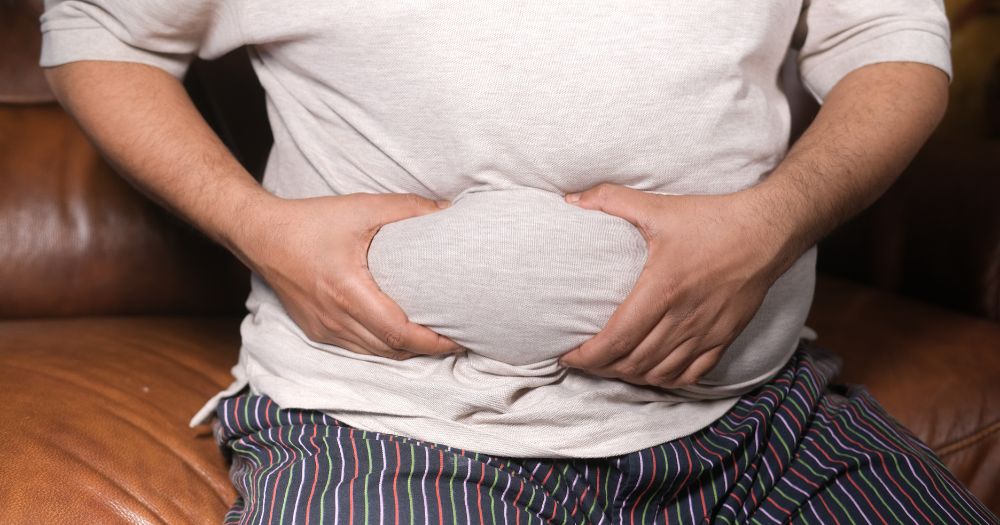More Singapore residents were found to be obese in 2021-2022, as compared to 2019-2020.
Additionally, the prevalence of hypertension has almost doubled since 2010.
These were some of the findings from the Ministry of Health (MOH)'s National Population Health Survey (NPHS) 2022.
National Population Health Survey (NPHS) 2022
The NPHS 2022, which was conducted between July 2021 and June 2022, tracks the health, risk factors and lifestyle practices of Singapore residents aged 18 to 74.
The sample of the survey consists of around 8,000 adults via household interview and around 9,000 adults who went for health examination at designated locations.
According to MOH, the survey helps the ministry with making and developing health policies.
Here are the key findings from the 2022 survey:
Obesity
The prevalence of obesity in Singapore increased from 10.5 per cent in 2019-2020 to 11.6 per cent in 2021-2022.
This increase was mainly observed among those aged 18 to 29, and 40 to 59.
An obese person is someone who has a body mass index (BMI) of over 30.
High-risk BMI
The number of people with high-risk BMI (≥ 27.5) also increased from 20.7 per cent in 2019-2020 to 22.3 per cent in 2021-2022.
Similarly to the findings on obesity, this increase was mainly seen in those aged 18 to 29, and 40 to 59.
Hypertension
The prevalence of hypertension continued its long-term rising trend, from 19.8 per cent in 2010, to 35.5 per cent in 2019-2020, and 37.0 per cent in 2021-2022.
The increase in prevalence of hypertension was mainly observed in residents aged 50 to 74 years old.
This was observed even after adjusting for the effect of an ageing population, MOH said.
Diabetes
The prevalence of diabetes, however, showed a positive trend, decreasing from 9.5 per cent in 2019-2020 to 8.5 per cent in 2021-2022.
The decrease was observed across all age groups and sexes.
Hyperlipidemia
Hyperlipidemia prevalence among Singapore residents also saw a decline, from 39.1 per cent in 2019-2020 to 31.9 per cent in 2021-2022.
Physical activity
The proportion of residents engaging in sufficient total physical activity decreased significantly from 84.6 per cent in 2019 to 74.9 per cent in 2022.
MOH said that this was likely due to the reduced commuting from hybrid work arrangements, which has not yet returned to pre-Covid-19 levels.
World Health Organisation (WHO) recommends at least 150 minutes of moderate-intensity physical activity per week as sufficient total physical activity.
Smoking
The smoking rate in Singapore has declined over the past decade, according to MOH.
This was also reflected in the latest findings, with the prevalence of daily smoking decreasing from 10.6 per cent in 2019 to 9.2 per cent in 2022.
Mental health
Poor mental health among Singapore residents, however, has increased from 13.4 per cent in 2020 to 17.0 per cent in 2022, with the highest proportion coming from young adults aged 18 to 29.
At the same time, there was an observed increase in help-seeking behaviour for residents who are unable to cope with stress, MOH said.
56.6 per cent of Singapore residents were willing to seek help from health professionals in 2022, compared to 47.8 per cent in 2019.
In 2022, 79.7 per cent were willing to seek help from informal support networks, such as friends, family, religious leaders or teachers.
This is higher that the 74.5 per cent in 2019.
"This reflects continued public awareness of mental health, and reduced stigma around mental health conditions," MOH said.
The full NPHS 2022 report can be viewed here.
Top image via Pixabay.
This article powered by Airalo's 10GB e-SIMs allows us to stay connected with our audience 24/7.
If you like what you read, follow us on Facebook, Instagram, Twitter and Telegram to get the latest updates.



